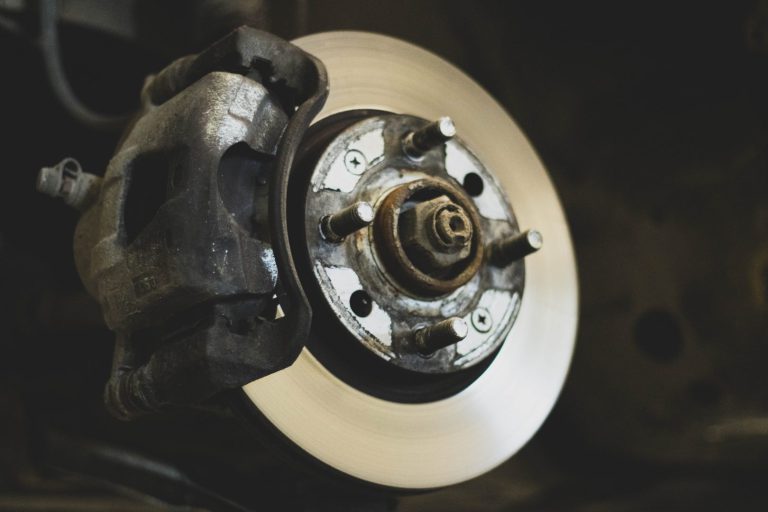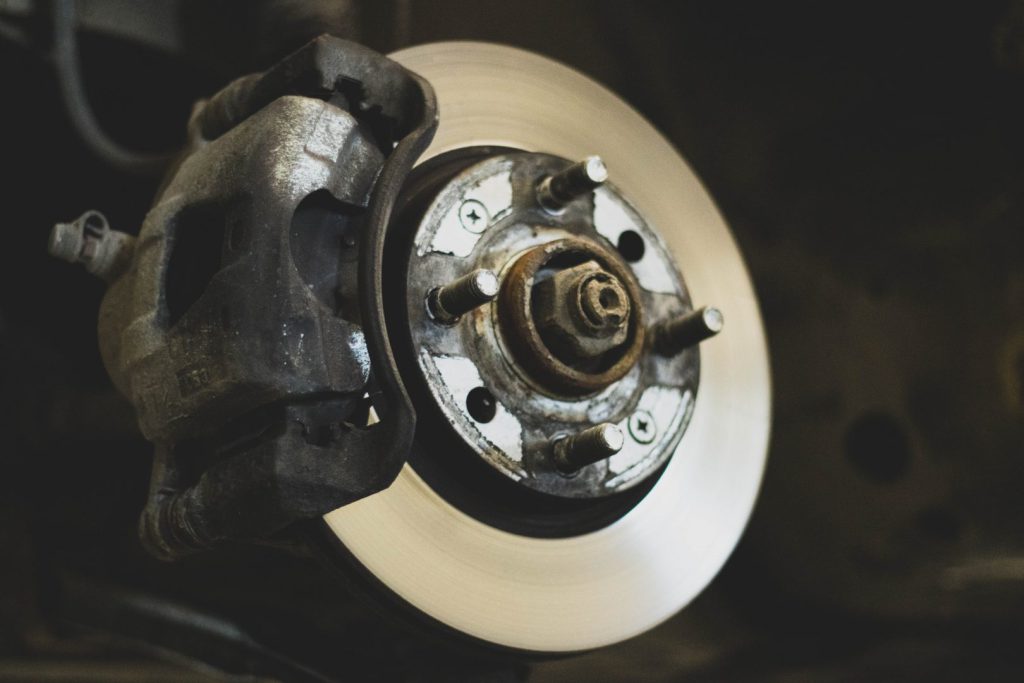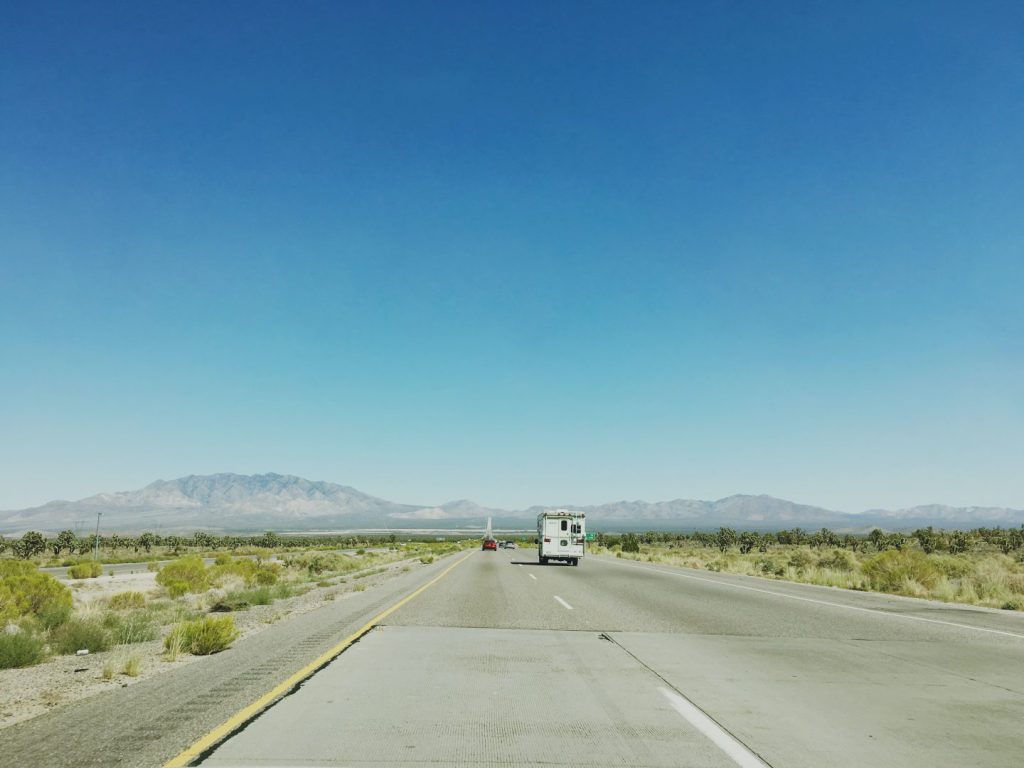
One of the most important things you can do as an RV owner is stay on top of your RV maintenance. This includes a whole slew of tasks such as resealing your roof, winterizing your rig before freezing temperatures hit, ensuring your motorhome engine is in good working order, and of course, fixing broken things.
All of these are crucial for ensuring you get the most out of your RV, and skipping any of them might mean your home-on-wheels doesn’t last as long as it should. That said, the most important piece of maintenance you’ll do is brake maintenance. Skipping this job might cost you much more than just your RV. It might cost you your life.
Obviously, nobody wants that to happen. Therefore, it’s crucial that you stay on top of your RV brake maintenance. This is pretty hard to do if you have no idea what kind of maintenance needs to be done. That’s why we’re here to walk you through the ins and outs of RV braking systems and how to maintain them properly.

Types of RV Brakes
The first thing to ask is, “How do RV brakes work?” And the answer to that question? There are different types of RV braking systems, and each one works a bit differently.
Hydraulic Brakes
Hydraulic brakes are what you’ll find in most modern vehicles. In vehicles with hydraulic brakes, pressure on the brake pedal causes a master cylinder to push brake fluid through the system. This in turn pushes the brake pads or shoes and applies pressure to either a brake drum or the disc/rotor. This friction causes the wheels to slow down, bringing the vehicle to a stop.
Air Assist Brakes
Larger motorhomes might need more braking power than hydraulic systems can offer. In these cases, manufacturers tend to turn to air braking systems. In these systems, compressed air is used to quickly and forcefully push the brake pads into position, causing the vehicle to stop. They have fewer points of failure and offer more stopping power for big rigs.
Electric Trailer Brakes
Some travel trailers and fifth wheels use hydraulic braking systems like the ones described above. Others use an electric system. When a trailer uses electric brakes, it must be plugged into the tow vehicle. The system can sense when your vehicle brake pedal is being applied and will tell the pads to engage when this happens.
Auxiliary Braking Systems
In addition to the main braking systems above, many motorhomes and large trucks are also equipped with auxiliary braking systems. These work by slowing the engine and/or transmission in order to slow the vehicle down. They are not meant to be used as a primary braking system, but can help you slow down when driving downhill, or assist your primary brakes in emergency braking situations.

RV Brakes Maintenance
Now that you know the different types of RV brakes and have an idea of how they work, the next thing you need to know is how to care for your RV brakes. RV brakes maintenance will differ a bit depending on which type of brake you’re working with, so you won’t need to do everything listed below, but instead do the tasks that apply to your vehicle.
Replace Pads on Disc Brakes
If you have disc brakes, your brake pads are the things that need to be checked and changed most often. Check these every 6 months or after long trips through the mountains. Pads should be at least 3/16” thick from the center of the pad. That said, many people prefer to change these sooner, especially on big vehicles such as RVs, as they require more stopping power.
Fortunately, brake pad replacement is relatively inexpensive and many handy people can do the job themselves.
Rotate Rotors on Disc Brakes
While you’re checking your pads, be sure to also take a peek at your rotors. The rotors see a lot of wear and should be rotated every other brake pad change to ensure you don’t see warping or grinding.
If warping, grinding, or other imperfections have occurred, or if the rotors are worn thin, you should replace your rotors entirely, something that will add to the time and cost investment.
Check Drums on Drum Brakes
If you don’t have disc brakes, you have drum brakes. These are most commonly seen on trailers and older motorhomes. That said, they can be found on newer motorhomes as well. If your RV has drum brakes, you will want to check your drums for deep grooves, hard spots, or burned places. If you find these things, the drums may need to be turned, reground, or replaced.
While you are at it, go ahead and check the brake shoes and magnet and give the drum a good cleaning with brake cleaner and a stiff bristle brush.
Replace Brake Fluid in Hydraulic Systems
Because brakes can see some seriously high temperatures, brake fluid is not affected by heat. That said, water is affected. While a hydraulic braking system is a closed system, it can still absorb moisture over time through condensation.
The water that makes its way into this system is a problem, because the water that mixes in with the brake fluid turns to steam once high enough temperatures are reached. Steam is more easily compressed than liquid and evaporates, meaning not as much pressure is put on the brake pads when the liquid is pushed through the system. This leaves you with spongy brakes—or worse, brakes that don’t work at all.
For this reason, it’s important that you drain and replace your brake fluid every three to five years to ensure you remove any water in the system. Additionally, since low brake fluid can cause similar issues, it is recommended that vehicle owners check their brake fluid level at every oil change and top up if it’s looking low.
Just make sure you check with your chassis manufacturer for instructions specific to your system and to ensure you have the correct fluid.
Drain Air Reservoir in Air Brake Systems
Air braking systems do not have brake fluid to maintain, but they do have an air reservoir that stores compressed air. Unfortunately, this reservoir tends to collect water and oil, which makes its way to the drain valves and must be cleaned out every 6 months or so.
While some air brake systems have an automatic drain valve flush feature, many require you to do this task manually. You will need to check with your chassis manufacturer for instructions that are specific to your vehicle.
Replace Filter in Air Brake Systems
Another maintenance task that air braking systems require? Filter replacement. The filter in an air brake system is used to help collect unwanted moisture and oil. Over time, this filter can become quite clogged, something that reduces airflow and weakens braking.
Since you definitely want your brakes to work as well as they possibly can, it’s recommended that you change this filter every 2 to 3 years. This will ensure your filter always allows enough air to pass through.
Adjust Electric Trailer Brakes
Electric trailer brakes use an in-cab brake controller to ensure they are calibrated correctly. Sometimes this controller will be an aftermarket upgrade that can be found under the dash. Other times, the brake controller is an OEM system and is integrated into the dash of the tow vehicle.
Either way, your brake controller should give you the option to set the pressure of your brakes on a scale of 0–10. Some brake controllers are self-calibrating, in which case you can skip this step entirely. Otherwise, you will need to calibrate the brake controller manually.
You’ll have to experiment with your trailer and tow vehicle to know where to set your controller. We recommend taking your RV to a gravel lot to set your brakes. Ensure your trailer is plugged into your vehicle. Start with the controller set to 4 or 5 and tow the RV through the gravel at about 20 mph. Apply the brakes and observe what the trailer does. If the brakes lock up, you need to adjust down. If the trailer stops too slowly, adjust up. Continue the process until the trailer stops correctly.
You will not need to change this setting when you get a new tow vehicle, get a new trailer, or anytime the weight of your trailer changes.
Check the Electromagnet on Electric Trailer Brakes
Another thing you’ll need to do to keep your trailer brakes working well is keep an eye on the electromagnet. This is located in the brake drum and should be able to move in and out of its cradle, but should not be loose or disconnected.
There are also wear indicators on these magnets. Check yours to ensure it isn’t time for a magnet replacement.

Using Your RV Brakes
Using your brakes properly is part of maintaining them. Fortunately, using your RV brakes is pretty straightforward. As long as they are taken care of—and plugged in, in the case of electric trailer brakes—you will only need to push the brake pedal and you will slow to a stop.
That said, there are a few points we feel we should make that will help keep your RV brakes in tip top shape and keep you and your family safe while out on the road.
Always Leave Plenty of Space
RVs are big heavy vehicles, and stopping them takes a little more time than stopping a small car. Keep this in mind when driving and always leave plenty of space between you and the vehicle in front of you. This will ensure you have time to use those well maintained brakes should traffic come to a stop for any reason.
Brake Early and Slowly When Possible
When you do stop, try to avoid slamming on the brakes. Instead, apply the brakes before you would in a car, and ease into the stop. This gives you extra time to stop and helps conserve the parts of your brakes that see the most wear.
Know When to Use Auxiliary Braking
If your motorhome or tow truck is equipped with auxiliary braking, know when to use it. You don’t want to use it every time, as brakes actually work best when they’re hot and they won’t get hot if they aren’t doing enough work.
That said, your auxiliary braking system should definitely kick in if you do find yourself in a situation where slamming on the brakes is necessary. Additionally, you should always have the auxiliary brakes turned on when driving in mountains, as it will keep you from applying your brakes too often and wearing them out or burning them up.
Don’t have auxiliary braking? If you plan to do any mountain driving, you will want to drive in a lower gear to get the same sort of result and avoid riding your brakes.
Listen and Feel for Problems
While you’re driving your RV, make sure you’re always paying attention to the way the rig feels and sounds. If you hear noises such as grinding or squeaking while braking, or if the brakes feel like they aren’t working quite right, you will want to head straight to a mechanic. After all, RV brakes aren’t something you want to find yourself without.
Finding Brake Parts
Ready to jump into your RV brake maintenance but unsure where to find brake parts? Fortunately, most motorhome and trailer brake parts can be found on Amazon. That said, if you’re having trouble finding a particular part, we can also recommend eTrailer or even a local auto parts store.
With this information, you should be well equipped to take excellent care of your RV brakes so you can travel safely. Want to avoid RV brake maintenance but still want to take RV vacations? Why not rent an RV and leave the maintenance to someone else?
This post contains affiliate links. RVshare may receive compensation if you make a purchase after clicking on a product or service link.

